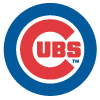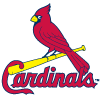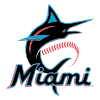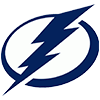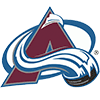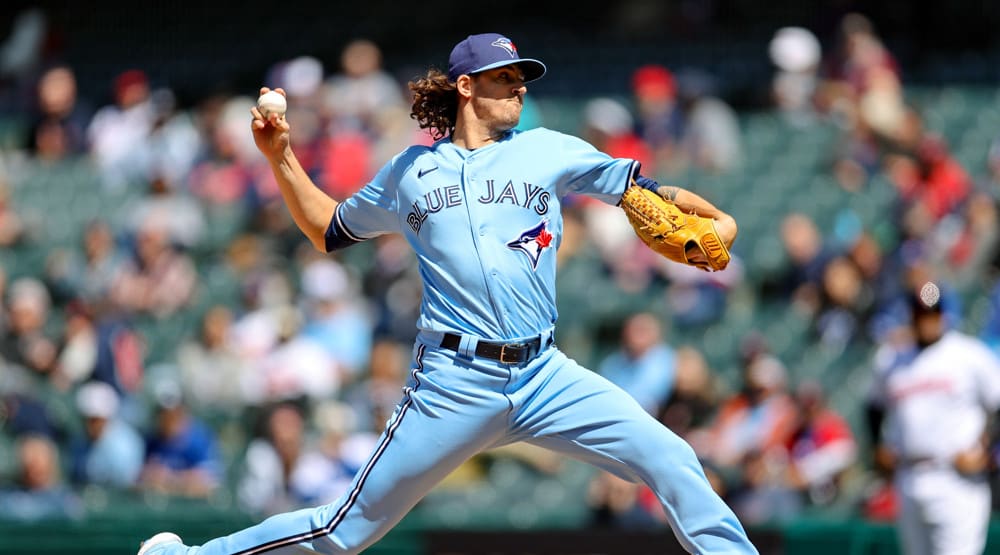After his session was over, he started walking away, but I, of course, followed him (from a distance!), amazed that no one seemed to notice a .338 lifetime hitter walking right past them. I eventually caught up to him and he looked at me and said "hi, I'm Tony." I was a bit tongue-tied at this point, and the first thing that came out my mouth was "Hey, I'm Dave." I then proceeded to talk with him for 10-15 minutes, ranging from how his brother Chris was doing to things like who was the pitcher he most hated to face – he said John Candelaria that day (.211 against him lifetime). He was engaging and patient, while I was probably nervous and blubbering. I still have the ball he signed that day.
After his session was over, he started walking away, but I, of course, followed him (from a distance!), amazed that no one seemed to notice a .338 lifetime hitter walking right past them. I eventually caught up to him and he looked at me and said "hi, I'm Tony." I was a bit tongue-tied at this point, and the first thing that came out my mouth was "Hey, I'm Dave." I then proceeded to talk with him for 10-15 minutes, ranging from how his brother Chris was doing to things like who was the pitcher he most hated to face – he said John Candelaria that day (.211 against him lifetime). He was engaging and patient, while I was probably nervous and blubbering. I still have the ball he signed that day. Although the ink has faded, my memories of that day have not. RIP Mr. Padre, RIP.
Last week we looked at a handful of pitchers with a significant variance between their ERA and xFIP, identifying players who have significant variances between their actual performance (ERA) and expected performance (xFIP) based on the items which they can control (BB, K, HR). We'll switch to hitters this week, looking to identify a couple things.
Hitters Due for More Home Runs
Here, I filtered on an arbitrary number – dividing a player's ISO by his number of home runs. The following chart contains all players with an ISO/HR greater than or equal to .02. Why look at the data this way? These are players with a fair amount of power, but a fair-sized portion of that power is coming more from doubles and triples than home runs compared to other hitters. The theory being that perhaps some of these doubles and triples will turn into home runs.
Here are the 13 players who met this criteria:
| PLAYER | HR | ISO | ISO/HR |
|---|---|---|---|
| Seth Smith, SD | 6 | .214 | .036 |
| Matt Adams, STL | 6 | .191 | .032 |
| Brandon Crawford, SF | 7 | .198 | .028 |
| Adam LaRoche, WSH | 8 | .192 | .024 |
| Lucas Duda, NYM | 8 | .191 | .024 |
| Junior Lake, CHC | 8 | .183 | .023 |
| Ryan Braun, MIL | 10 | .224 | .023 |
| Kyle Seager, SEA | 10 | .208 | .022 |
| Andrew McCutchen, PIT | 11 | .227 | .021 |
| Khris Davis, MIL | 11 | .227 | .021 |
| Marlon Byrd, PHI | 10 | .205 | .021 |
| Yasiel Puig, LAD | 11 | .225 | .020 |
| Adam Dunn, CHW | 11 | .221 | .020 |
Seth Smith - Smith has been one of the few things worth watching on the Padres this year, meaning there's a good chance the perpetually-rebuilding Padres will trade him next month. It's not a huge surprise to see Smith on this list given the difficulty hitters have in hitting home runs in Petco Park. Given his history, 15 homers are about Smith's ceiling.
Matt Adams - Adams has seen last year's 17.4 AB/HR rate exactly double to 34.8 this year, leaving open the possibility of an impending power surge. Adams' L/R splits are extreme, as he destroys right-handers but is batting .143 vs. southpaws. If you're a Strat-o-Matic player, Adams looks to be headed towards an 8R or 9R rating.
Brandon Crawford - Crawford's five triples help get him on this list. He's actually ahead of last year's HR pace, making it tough to see a power spike.
Adam LaRoche - LaRoche's .901 OPS would be his best mark since 2006 if it were to miraculously hold up. He'll likely end up with about 20 home runs.
Lucas Duda - Duda hit home run No. 9 on Tuesday along with double No. 16, with the latter equaling last year's output, but in 110 fewer at-bats. He's clearly hitting for more power in general, but if he can turn some of those doubles into home runs, Duda should hit between 20 and 25 home runs.
Junior Lake - Lake's power is developing nicely, but getting at all excited about a guy with a 33.6 K% and 4.1 BB% is tough. Factor in that he's not an everyday player, and Lake isn't someone to recommend outside of NL-only formats.
Ryan Braun - From 2011-2012, Braun homered once every 15.7 at-bats. Since, that ratio has worsened to 23.3. Age, steroids or lack thereof, or just a slow start have combined in some form to cause a bit of a power drop for the one-time MVP. Braun looks to be more of a 25-30 homer guy now rather than 40-plus.
Andrew McCutchen - McCutchen has caught fire and with four homers in the last week, he should easily surpass last year's 21, with 2012's 31 also a possibility given the power surge. Last year's NL MVP is having an even better season in 2014.
Khris Davis - In 106 fewer at-bats, Davis has equaled last year's HR output with 11 home runs. He's shown easy 30-homer power, especially with last year's 11 in just 136 at-bats. Davis looks to be capable of hitting 10 home runs in any given month.
Marlon Byrd - Byrd's flyball rate is up more than five points compared to 2013, so last year's 24 homers should be a baseline for our 2014 expectations. I don't see much of a power spike coming.
Yasiel Puig - It's tough to find much fault with Puig, but his last home run came on May 28, and for a player with his raw skills and ability, there should be more power to come. Maybe it doesn't happen this year, but Puig has a 40-homer season ahead of him.
Adam Dunn - At .236, Dunn's average would be his highest since 2010's .260 if it were to hold. The home-run power though is down a bit – 18.1 AB/HR vs. last year's 15.4. Dunn's doubles are up significantly over last year (10 already, compared to last year's 15), so seeing some of those turn into home runs would not be a surprise.
Hitters Poised for Improved Batting Average
For this section, I took all batting title-qualified hitters with a BABIP less than .270 and a walk rate 10 percent or greater. The theory is these players have a good idea of what pitches to swing at, but are not having much luck on balls in play.
Here are the nine who met that criteria:
| PLAYER | BB% | K% | BABIP | AVG |
|---|---|---|---|---|
| Carlos Santana, CLE | 18.4 | 19.9 | .209 | .191 |
| David Ortiz, BOS | 13.7 | 15.8 | .243 | .246 |
| Jed Lowrie, OAK | 11.6 | 12.7 | .243 | .224 |
| Brian Dozier, MIN | 13.9 | 17.7 | .244 | .239 |
| Mark Reynolds, MIL | 11.1 | 31.1 | .246 | .210 |
| Edwin Encarnacion, TOR | 11.0 | 15.7 | .251 | .263 |
| Nick Swisher, CLE | 12.3 | 23.0 | .252 | .204 |
| Alberto Callaspo, OAK | 12.1 | 12.1 | .256 | .233 |
| Josh Donaldson, OAK | 10.8 | 20.7 | .265 | .249 |
Carlos Santana - Santana remains an enigma, with Dodgers fans likely pleased to see the low average given their team traded him for a now-retired Casey Blake. Santana probably shouldn't be expected to have a high BABIP given his lack of wheels, but .209? That surely has to come up, and it slowly is, as Santana is 13-for-39 with three home runs since coming off the DL on June 6. Given he's receiving the majority of his playing time at third base (11 games at catcher), that should help keep Santana fresh over the course of the year. I'm a firm believer in his bat.
David Ortiz - Ortiz hasn't posted a BABIP this low since 2009, a year in which he batted just .238. He's hit just .165 the last 30 days, though with a 19:19 K:BB in that time, it's not like he's been lost at the plate. Ortiz will get the average back up in the .270 range by year's end, but his three-year run of .300-plus marks is at an end.
Jed Lowrie - Lowrie's walks are up and strikeouts are down over last year, but his average is down 56 points. That makes little sense other than to blame the decline on BABIP and the fact his FB% is up five points over last year, and he's sporting just a 4-percent HR/FB rate. Lowrie is just a .259 career hitter, so we won't predict .290 again this year, but I see little reason to predict much less than .260 the rest of the way.
Brian Dozier - I could probably research this in gory detail, but I have to think that there is some correlation between walk rate and batting average. Sure, you could be a Vladimir Guerrero-like hacker and hit .330, but you don't think a player like Dee Gordon could hit .320 easily if he had the patience of Jose Bautista instead of a 6.3 BB%? Well, Dozier has his BB% up from 8.2 to 13.9 over last year, yet his average is down five points to .239. Perhaps he's simply swinging for the fences too often, as Dozier already has 15 HR this year (17.3 AB/HR) versus last year's 18 (31 AB/HR). He's also swiped 15 bases, so other than the batting average, Dozier has been a fantasy superstar and a huge bargain to date. Dozier batted .320 in the minors in 2011, but he hit just .232 in 48 Triple-A games the following year and has yet to show much of an ability to hit for average as a big leaguer. At this point until he proves otherwise, expecting more than .250 is probably not going to happen.
Mark Reynolds - Reynolds is on track to exceed last year's 21 home runs, as his 13 give him a shot at his first 30-homer season since 2011 as long as he doesn't hit his way to the bench. We'll ignore BABIP and just show you his averages from the previous three seasons: .221, .221, .220. Safe to pencil him in for another one in that range this year.
Edwin Encarnacion - This is exactly who Encarnacion has been in recent years. A player who can be expected to hit in the .270 range with 40 home runs. Encarnacion's low BABIP is also in line with the prior two seasons (.266 and .247), so it's safe to say that his performance to date was to be expected and should continue through the year.
Nick Swisher - With a .622 OPS and just four home runs, Swisher looks washed up at age 33 with two years remaining on a four-year $56 million contract. He's still hitting line drives (24.0 LD%), so some element of the .204 average is likely the result of a low BABIP. Another part of Swisher's poor start can be put on a flyball rate that has risen close to five points combined with a very low 6.2-percent HR/FB percentage. We should see a few more flyballs clear the wall, but it would be a surprise to see Swisher even hit .260 the rest of the way. This is looking like a terrible contract for the Indians.
Alberto Callaspo - Callaspo has a 28:28 K:BB in 60 games, so the .233 BA is pretty disappointing. Callaspo did have four hits in Monday's game; perhaps things are looking up, but either way, he's far more valuable in OBP leagues.
Josh Donaldson - Donaldson has seen his batting average drop from .301 to .249 year over year, with much of that attributable to a 70-point BABIP decline. I never saw Donaldson as more than a .270 hitter this year given last year's BABIP, his overall lack of speed and his relatively big swing. I can see .270 the rest of the way, but that only gets him maybe into the low .260s by year's end.
Top Five Closer Situations to Monitor
L.A. Angels
Despite a 5.46 ERA and his last outing having been a four-run debacle, Ernesto Frieri is still the Angels' primary closer. That said, outside of the very shallowest of leagues, Joe Smith should be in reserve as Frieri's most-likely successor. Frieri does have a 36:7 K:BB in 28 innings as well as a .339 BABIP, so there is some reason for optimism, but that doesn't completely excuse the ERA or the seven home runs allowed. Smith, meanwhile, has a 3.18 ERA and 1.16 WHIP and is clearly option No. 2 for manager Mike Scioscia, who has in fact used Smith in the ninth inning on occasion already this year (five saves). Frieri has the stuff to turn things around, but this may also already be a jobshare, just not an "official" one. Perhaps Cam Bedrosian gets a chance to follow in his father's footsteps at some point.
Chicago White Sox
After a bit of a rough patch, presumed closer Ronald Belisario has allowed two runs in his last six innings while going 4-for-4 in save opportunities. Overall, Belisario's ERA stands at an uncloser-like 4.76, but his 2.94 FIP indicates he's had some poor luck along the way. As for his competition, the White Sox are a bit banged up in the setup man department. Nate Jones (back) and Matt Lindstrom (ankle) are both out, and there are questions whether each will return at all this year. Javy Guerra is healthy, has closer experience and sports a 2.53 ERA in 10.2 innings. He's probably the reliever ahead of Scott Downs and Daniel Webb that I would target.
New York Mets
Jenrry Mejia is still the closer despite dealing with a back injury and carrying a 4.36 ERA and 1.49 WHIP. He has all the stuff to be a top closer for a long time, and given Mejia has reeled off three straight hitless outings, perhaps he's settling in. If not, Jeurys Familia and Vic Black are the top candidates to see their fantasy value skyrocket. Familia averages 96.3 mph with his fastball and with a 2.60 ERA, he could be a real threat. Black is less known, but he's allowed just one run in 12.1 innings despite a 14:8 K:BB. He's probably not an option to close until he can figure out where the ball is going on a consistent basis.
Tampa Bay Rays
Grant Balfour opened the season as the team's closer, but he's now sporting a 6.15 ERA, 1.56 WHIP and 22:20 K:BB in 26.1 innings, prompting manager Joe Maddon to employ the dreaded "closer by committee" approach. The other members of said committee? Likely Joel Peralta, Jacob McGee and Juan Oviedo. In terms of value NOW, I'd probably rank them: Oviedo, Balfour, McGee and Peralta. Oviedo picked up the save Monday and has a 2.31 ERA in 23 appearances. With his having closer experience, Oviedo is worth a look in deeper formats. Balfour, though, is in the first year of a two-year $12 million contract, so the Rays will give him another chance it would seem.
Chicago Cubs
Hector Rondon went nine days between appearances due to elbow soreness, but in his first outing back Monday, Rondon struck out the side, though he did allow a pair of baserunners. Overall, Rondon has been excellent with a 2.36 ERA and 32:9 K:BB in 26.2 innings. His next couple outings will be key, as I'm not 100 percent convinced his elbow difficulties are behind him. Neil Ramirez, meanwhile, has been lights out, posting a 1.06 ERA and 26:5 K:BB in 17 innings for a 13.8 K/9. We'll see how this all plays out, but if Rondon proves healthy and effective this next week he's probably going to be the primary closer.












